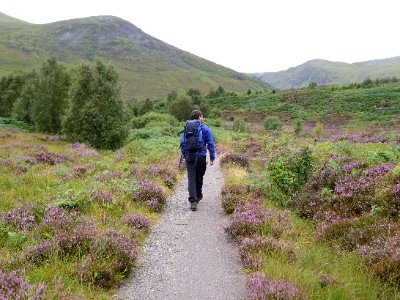Wednesday 20th September 2023, 4:25pm

With deer stalking activity increasing until 20th October, hill-goers are being encouraged to check the Heading for the Scottish Hills service to avoid disturbing essential deer management during this key period.
Managing the number of deer is vital for preventing nature loss and tackling the climate change crisis facing Scotland. Reducing deer impacts, such as overgrazing and trampling, will enable the recovery of upland habitats, resulting in a more diverse landscape that benefits biodiversity and absorbs more carbon.
As part of the response to the nature and climate crises, the Heading for the Scottish Hills website has expanded to cover both the red deer stag and hind stalking seasons.
People should now check for deer stalking information to help plan their routes if they are going to the Scottish hills any time between 1st July and 15th February. Using this service is particularly important during two key periods - from the 1st to 20th October and towards the end of the hind season, which ends on 15th February.
Part of the Scottish Outdoor Access Code website, Heading for the Scottish Hills helps people find out where deer stalking is taking place, alongside other resources such as Walkhighlands. The pages advise where and when stalking happens on popular hills, provide details of who to contact for more information and include routes that are ‘always okay’.
The Scottish Outdoor Access Code also encourages people to pay close attention to signage on arrival and throughout their visit, follow reasonable advice from land managers on alternative routes and avoid crossing land where deer stalking is taking place.
Davie Black, Mountaineering Scotland Access Officer, said: “Heading for the Scottish Hills is an important source of information to help plan walking routes that minimise the chance of disturbing stalking. We encourage all walkers to check the website, as many of us will be unaware that we could be causing issues for stalkers who are trying to reduce the impact of deer on the environment. If you have specific questions about your route, please contact the relevant estate.”
Fiona Cuninghame, NatureScot Recreation, Access and Paths Officer, said: “Our Heading for the Scottish Hills service is a great resource to help you enjoy your day out in the hills without disturbing deer stalking, as well as learning about your rights and responsibilities more generally under the Scottish Outdoor Access Code.”
“Even if you head to the hills often, you should check the Heading for the Scottish Hills website regularly to get up-to-date information before you plan your route.”